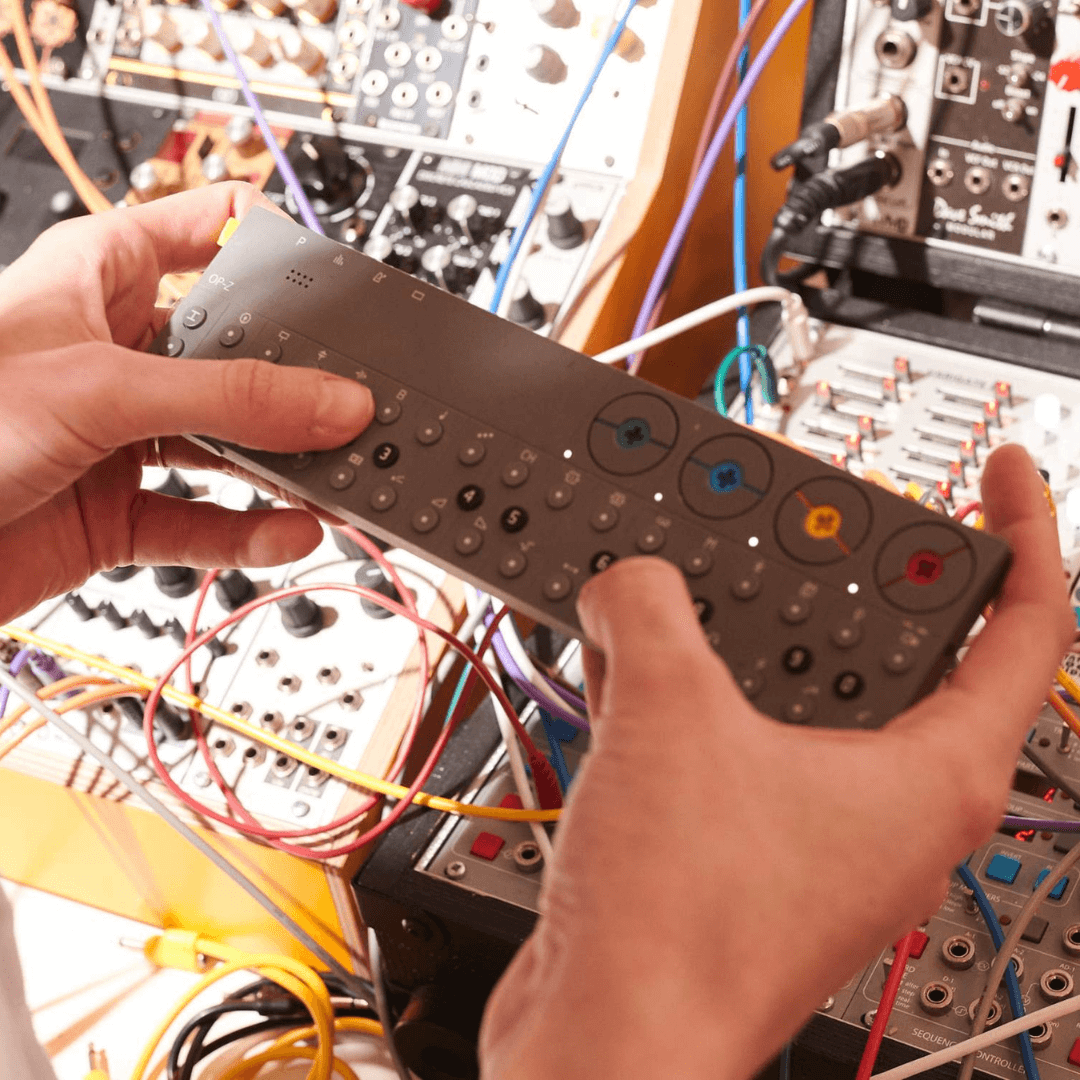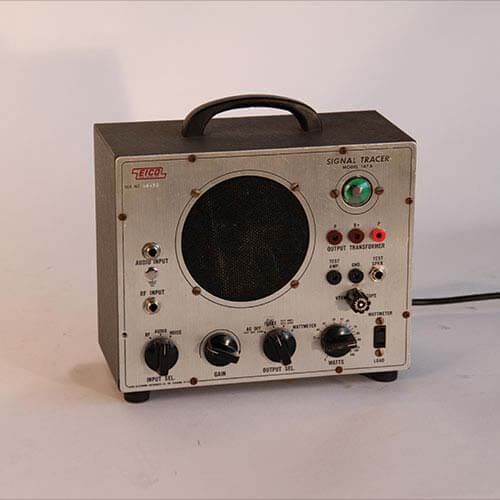Music as Mood Magic in Sonic Brand Systems
How would you describe music to an alien?
How would you explain the art of organizing sound into a pleasing, expressive form, and how would you account for its ubiquity in human culture and society? Music is so central to our daily lives that it is easy to take for granted, but if you think about it, music is a kind of magic. By using our voices, hands and bodies to create vibrations of air molecules, we can beam feelings and emotions directly into the minds of those around us, using patterns of meaning and expressiveness defined by a bewildering mix of physics, culture, tradition and expectation. Music is one of the most powerful – and arguably under-utilized – communication tools that marketers and creators have at their disposal, and a thoughtful approach to music composition and curation can have a massive impact.
As discussed in the first installment of this series, music is thought to have been part of human culture for as long as we can remember, with evidence of musical instruments dating back thousands of years. The origins of music are still unclear, and widely debated, but there is evidence that it is an outgrowth of an important evolutionary attribute in human beings – the experience of emotion itself, and the need to express it.
Researchers speculate that emotions evolved out of the lifestyle of ancient hunter-gatherer societies, motivating early humans through the ups and downs of avoiding predators, finding food, competing for resources, and caring for offspring. (Plutchik, 1994, chap. 9; Scott, 1980) The ability to express emotions, and decode them from others, are thought to have evolved as useful tools for communication and collaboration. (Buck, 1984, chap. 2; Plutchik, 1994; chap. 10) Music and speech are the best means we have for conveying emotions, and it is often speculated that they share the same evolutionary origin (Helmholtz 1863/ 1954). In fact, there is evidence of consistent acoustic features between speech patterns and musical patterns for specific emotions. (Juslin & Laukka, 2003) For example, people tend to speak more slowly and at lower pitches when they are sad, and more quickly at higher pitches when they are happy or excited. There is longstanding evidence for a similar dynamic in music, with bright, upbeat music being perceived as happy and slow, bass-heavy music being perceived as sad. (Hevner, 1936).
Faster, higher-pitched music is perceived as happy, similar to speech.
Slower, lower pitched music is perceived to be sad.
Modern neuroscience techniques confirm that music has a profound emotional effect on people, which can be measured physiologically. Music has been shown to affect listeners’ heart rate, blood pressure, respiration, skin conductance, and skin temperature. (Arjmand et al., 2017). There is evidence that beloved music increases blood flow to brain regions thought to be involved in reward, emotion, and arousal (Blood & Zatorre, 2001) — essentially hitting the same buttons as food, sex and drugs. Listening to music can even boosts your immune system (Levetin, 2007), and there is evidence that it is more effective than prescription drugs in reducing anxiety before surgery (Chanda & Levitin, 2013).
While the powerful emotional effects of music are well-established, the mechanisms that produce them are still unclear. Commonalities with speech patterns, while fascinating, do not tell the whole story. Music theory, which attempts to explain the emotions music elicits based on specific combinations of frequencies, dates back as far as ancient Greece (Gabrielsson & Juslin, 2003) and empirical evidence suggest that these basic assumptions do accurately predict basic emotional responses (Hevner, 1935; Justus et al., 2018). This system of musical analysis has become a global standard for musicians and composers, creating what is essentially a shared international musical language.
However, music theory also cannot completely account for the emotional qualities of music. Another critical factor is the larger cultural context and associations around music. Evidence suggests that music listening is an extremely common part of most peoples’ lives, and in general makes people feel more positive, alert and present. (Sloboda et al., 2001) Researchers have found evidence that people use music as a mood-regulation technology, helping people to calm down, pump themselves up, or vent. (DeNora, 1999). Research also suggests an important connection to associations and memories – people tend to associate specific pieces of music with specific moments in their lives that had a major emotional impact on them, coloring their responses to music in a way that is not predictable by the characteristics of the music itself. (Patrick et al., 2004)
Fascinatingly, it appears that emotional responses to music have the ability to cross boundaries and cultures, suggesting that the phenomenon is innate to humanity. Virtually all cultures, for example, utilize scales of seven or fewer pitches, use simplistic rhythmic building blocks based on intervals of two or three, use “octave equivalence” or the principle of considering notes with double frequencies to be the same pitch class, and use verbal texts for vocal music (often in the context of religious rituals.) (Brown & Jordania, 2011).
Furthermore, listeners have repeatedly been shown to understand the intent of music from unfamiliar styles and cultures (Mehr et al., 2018), differentiating musical genres such as lullabies and dances despite never having previously heard songs from the culture in question. Fascinatingly, these effects can even be observed in children as young as four years old (Hilton et al., 221), suggesting that many of these underlying principles of music perception are innate, not learned. All this makes music a powerful tool for communicating across cultures and boundaries.
Music sets the tone, and enhances the message.
How can you harness the emotional power of music to communicate more effectively and make stronger connections with audiences? The answer involves being more intentional and thoughtful in how music is used.
Today, most brands use music extensively throughout communications to drive the emotional tone of media. Despite the crucial role it plays, however, music is often treated as an afterthought. Most brands provide detailed guidelines around color, typefaces and logo placement, but few offer strategic guidance on music composition and supervision, leaving creators with an open-ended brief that can be more overwhelming than empowering. All of this creates a missed opportunity to build a cohesive musical identity, stand out in the landscape and more intentionally sculpt the emotional tone of media.
“Music wins hearts and minds, builds affinity and equity and allows audiences to emotionally connect to your message.” says Wilson Brown, executive creative director at Antfood. “In the big picture of a media spend, investment in music goes a long way. Dollar for dollar, music offers the greatest ROI in terms of moving the needle on how audiences feel about – and therefore perceive – a brand.”
This perspective is confirmed by research. Advertising that appeals to emotions is more effective than purely rational advertising, leading to more favorable attitudes towards the brand and ad, as well as higher purchase intent and consumption (Lee & Heere, 2018). Given how deeply music is tied to emotions, a thoughtful score can make a big impact on emotional advertising. Research into music in advertising has also repeatedly demonstrated that, when music is perceived to be aligned with the message, product or brand, it leads to an increase in purchase intent, brand attitude, recall facilitation, and affective response. (Oaks, 2007) Other studies have shown that music can influence the perceived cost of a brand, and that the right score can keep viewers engaged longer and influence purchasing decisions. (Abolhasani, 2017)
Brands should also consider the impact of environmental music in a retail setting. Research has demonstrated that one of the most negative experiences people have with music in their daily lives is when music in a physical location feels poorly matched with the context, either because it is too loud or is giving inappropriate emotional cues. (Sloboda et al., 2001) Studies have also shown that the tempo of music playing in a store can significantly affect purchases, dwell time, and more. (Milliman, 1986).
So, how do marketers actualize the potential of music?
Creating a consistent musical identity works the same way as creating brand consistency in other mediums: it all comes down to providing internal teams with the right tools and guidance. For example, Antfood created a comprehensive music identity for the grocery delivery service Instacart, complete with a toolkit of bespoke and ready-to-use music, a musical style guide, and templated briefs. Guidelines such as these can be incredibly helpful tools for composers, especially when they are supported with robust listening examples and clear guardrails.
“Music is crucial in how we connect with our audience across all of our media channels. It sets the tone to help us tell our story,” says Kevin Byrd, Executive Creative Director at Instacart. “It’s what’s on the record player at the party we’re hosting, while we entertain and engage our guests. Tactically, music is a key differentiator for us within the competitive landscape — its curation reinforces our cultural prowess.”
To create Instacart’s music identity, we built off insights from our previous work creating their sonic logo, which reflects the vibrant and joyful nature of the brand (see part 2 of this series for more info). The sound includes subtly jazz-inflected composition an ear-catching whistle, along with contemporary production and tactile sounds made from real carrots. The process of creating this sound helped us build familiarity with the culture and ethos of the brand, which proved incredibly helpful as we dove into music composition.
“By the time we started writing music, we already had a pretty good feel for what the brand sounded like. So we started by doing what we do best – making cool tracks.” says Bennett Eiferman, senior composer at Antfood and creative lead for the Instacart sonic brand. After some creative exploration and experimentation, we settled on an eclectic sound based on repurposing classic styles into a forward-thinking yet familiar aesthetic.
“Musically, the tracks are a rather unique blend of soul, pop, electronic music, and dance music.” explains Bennett. “One thing we noticed in songs that were working nicely was the use of sampled vocals and band performances. Luckily, Antfood has a massive catalog of music that we dug through to find some choice, highly sampleable material. We also recorded a few new tracks that provided us with content to then be sampled. This ad-hoc style of composition and production allowed us to get very specific in sound and mood.”
The final tracks take cues from dance music and remix culture, using sampling techniques to reimagine classic sounds in a fresh and contemporary context. Elements of disco, soul, funk and even barbershop quartets found their way into the music, given new life via modern production techniques such as chopping, warping, looping and re-arranging.
Once we defined Instacart’s aesthetic, we then set out to create the most useful toolkit possible for each team. We composed alternate versions of each track across three energy levels, which we termed “mild, medium and spicy.” This gave Instacart a range of intensities to work with, everything from light background music that could accomodate voice narration to intense and in-your-face tracks composed to make a big impression. We also delivered stems and modular assets to allow Instacart creators to remix and reimagine the music freely, creating an entire musical universe out of just a handful of tracks.
Importantly, throughout creating the sound of Instacart, we focused on one particular measure of success – was the music something we would actually enjoy listening to? Were they, as Bennett describes, “cool tracks?” Instacart had already built a solid foundation with tasteful and unique licensed tracks, and we knew our work would have to live alongside selections from forward-thinking artists. This instinctive approach, complimented by strategic brand insights, allowed us to achieve a style with the cultural relevance that is so important to the brand.
This emphasis on instinctive, gut-level responses touches on something important, and fascinating, about music. Throughout this article, we have only touched on a fraction of the depth of scientific and academic investigation into the phenomenon of music, a body of work that goes back hundreds of years. And yet, despite all of this investigation and discussion, many things about music still feel elusive, even magical. The power of music can be studied empirically and measured scientifically, but at the same time, there will always be transcendent qualities to the art form, nuances of feeling, culture and memory that cannot be fully reduced to a statistic. Even the most strategic music practitioner will tell you that sometimes, you need to trust your gut and allow inspiration to strike. A scientific perspective on music complements and reinforces what most of us know instinctively – that music is a powerful and evocative tool for expressing and processing emotions.
By augmenting our creative instincts with strategic guidance, we can use music more effectively, becoming better storytellers and communicators. Since the dawn of human history, music has been a fundamental tool for self-expression, and likely always will be no matter what the future holds in terms of media and technology trends. Now is an excellent time to evaluate how you use music in your daily life, and to consider how you might actualize its enormous expressive potential across anything you create.
About the author
Colin Coogan, Senior Creative Strategist at Antfood has over 10 years of experience in sonic branding. A lifelong musician, he leverages knowledge of psychology, brand strategy, and music to build comprehensive sonic identities and experiences. He lives in Brooklyn with his fiancé and two unusually large cats.
Citations
Abolhasani, M. (2017). Investigating the influence of musical congruity in advertising.
Arjmand, H. A., Hohagen, J., Paton, B., & Rickard, N. S. (2017). Emotional Responses to Music: Shifts in Frontal Brain Asymmetry Mark Periods of Musical Change. Frontiers in psychology, 8, 2044. https://doi.org/10.3389/fpsyg.2017.02044
Blood, A. J., & Zatorre, R. J. (2001). Intensely pleasurable responses to music correlate with activity in brain regions implicated in reward and emotion. Proceedings of the National Academy of Sciences of the United States of America, 98(20), 11818–11823. https://doi.org/10.1073/pnas.191355898
Brown, S., & Jordania, J. (2013). Universals in the world’s musics. Psychology of Music, 41(2), 229–248. https://doi.org/10.1177/0305735611425896
Buck, R. (1984). The communication of emotion. New York: Guilford Press.
Chanda, M. L., & Levitin, D. J. (2013). The neurochemistry of music. Trends in cognitive sciences, 17(4), 179–193. https://doi.org/10.1016/j.tics.2013.02.007
DeNora T. (1999). Music as a technology of the self. Poetics, 27(1), 31–56. https://doi.org/10.1016/S0304-422X(99)00017-0
Gabrielsson, A., & Juslin, P. N. (2003). Emotional expression in music. In R. J. Davidson, K. R. Scherer, & H. H. Goldsmith (Eds.), Handbook of affective sciences (pp. 503–534). Oxford University Press.
Helmholtz, H. L. F. von. (1954). On the sensations of tone as a psychological basis for the theory of music. New York: Dover. (Original work published 1863)
Hevner, K. (1936). Experimental Studies of the Elements of Expression in Music. The American Journal of Psychology, 48(2), 246–268. https://doi.org/10.2307/1415746
Hevner, K. (1935). The Affective Character of the Major and Minor Modes in Music. The American Journal of Psychology, 47(1), 103–118. https://doi.org/10.2307/1416710
Hilton, C. B., Crowley, L., Yan, R., Martin, A., & Mehr, S. A. (2021). Children infer the behavioral contexts of unfamiliar foreign songs. https://doi.org/10.31234/osf.io/rz6qn
Juslin, P. N., & Laukka, P. (2003). Communication of emotions in vocal expression and music performance: Different channels, same code? Psychological Bulletin, 129(5), 770–814. https://doi.org/10.1037/0033-2909.129.5.770
Justus, Timothy & Gabriel, Laura & Pfaff, Adela. (2018). Form and Meaning in Music: Revisiting the Affective Character of the Major and Minor Modes. 1. 229-247. 10.1080/25742442.2019.1597578.
Lee, S., & Heere, B. (2018). Exploring the Relative Effectiveness of Emotional, Rational, and Combination Advertising Appeals on Sport Consumer Behavior. Sport Marketing Quarterly, 27(2), 82+.
Levitin, D. J. (2007). This is your brain on music. New American Library.
Mehr, S. A., Singh, M., York, H., Glowacki, L., & Krasnow, M. M. (2018). Form and Function in Human Song. Current biology: CB, 28(3), 356–368.e5. https://doi.org/10.1016/j.cub.2017.12.042
Milliman, R. E. (1986). The Influence of Background Music on the Behavior of Restaurant Patrons. Journal of Consumer Research, 13(2), 286–289. http://www.jstor.org/stable/2489234
Oakes, S. (2007). Evaluating empirical research into music in advertising: A congruity perspective. Journal of Advertising Research, 47(1), 38–50. https://doi.org/10.2501/S0021849907070055
Patrik N. Juslin & Petri Laukka (2004) Expression, Perception, and Induction of Musical Emotions: A Review and a Questionnaire Study of Everyday Listening, Journal of New Music Research, 33:3, 217-238, DOI: 10.1080/0929821042000317813
Plutchik, R. (1994). The psychology and biology of emotion. New York: Harper-Collins.
Scott, J. P. (1980). The function of emotions in behavioral systems: A systems theory analysis. In R. Plutchik & H. Kellerman (Eds.), Emotion: Theory, research, and experience: Vol. 1. Theories of emotion (pp. 35–56). New York: Academic Press.
Sloboda, J. A. (1991). Music Structure and Emotional Response: Some Empirical Findings. Psychology of Music, 19(2), 110–120. https://doi.org/10.1177/0305735691192002
Sloboda, John & O’Neill, Susan. (2001). “Emotions in everyday listening to music. in Music and Emotion: Theory and Research, eds P. N. Juslin and J. A. Sloboda.



